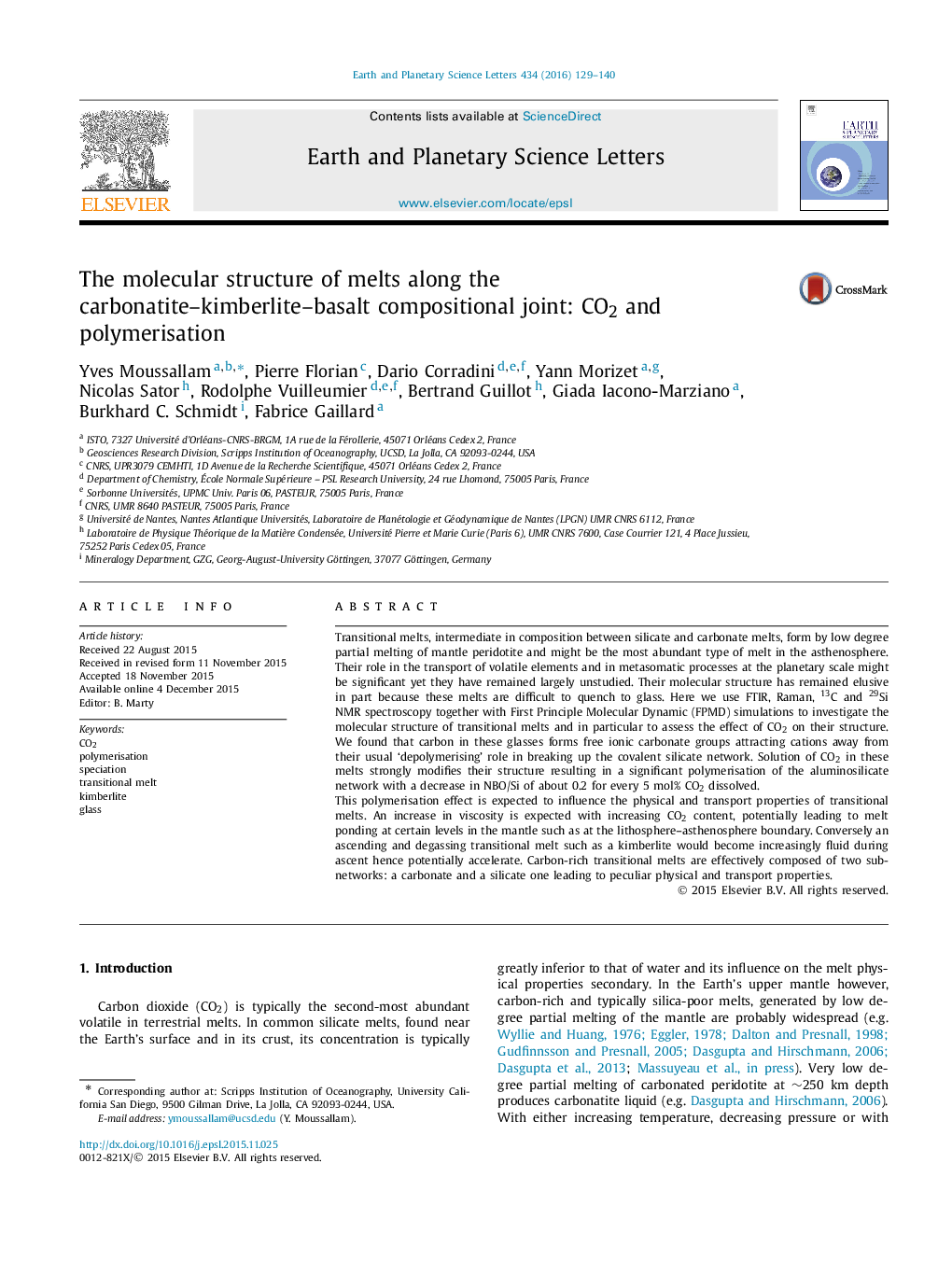| کد مقاله | کد نشریه | سال انتشار | مقاله انگلیسی | نسخه تمام متن |
|---|---|---|---|---|
| 6427732 | 1634722 | 2016 | 12 صفحه PDF | دانلود رایگان |

- First Infrared, Raman and NMR investigation of transitional glasses.
- First evidence of CO2-induced polymerisation in low-Si silicate melts.
- The viscosity of low degree mantle partial melt might be higher than expected possibly impeding their ascent.
Transitional melts, intermediate in composition between silicate and carbonate melts, form by low degree partial melting of mantle peridotite and might be the most abundant type of melt in the asthenosphere. Their role in the transport of volatile elements and in metasomatic processes at the planetary scale might be significant yet they have remained largely unstudied. Their molecular structure has remained elusive in part because these melts are difficult to quench to glass. Here we use FTIR, Raman, 13C and 29Si NMR spectroscopy together with First Principle Molecular Dynamic (FPMD) simulations to investigate the molecular structure of transitional melts and in particular to assess the effect of CO2 on their structure. We found that carbon in these glasses forms free ionic carbonate groups attracting cations away from their usual 'depolymerising' role in breaking up the covalent silicate network. Solution of CO2 in these melts strongly modifies their structure resulting in a significant polymerisation of the aluminosilicate network with a decrease in NBO/Si of about 0.2 for every 5 mol% CO2 dissolved.This polymerisation effect is expected to influence the physical and transport properties of transitional melts. An increase in viscosity is expected with increasing CO2 content, potentially leading to melt ponding at certain levels in the mantle such as at the lithosphere-asthenosphere boundary. Conversely an ascending and degassing transitional melt such as a kimberlite would become increasingly fluid during ascent hence potentially accelerate. Carbon-rich transitional melts are effectively composed of two sub-networks: a carbonate and a silicate one leading to peculiar physical and transport properties.
Journal: Earth and Planetary Science Letters - Volume 434, 15 January 2016, Pages 129-140